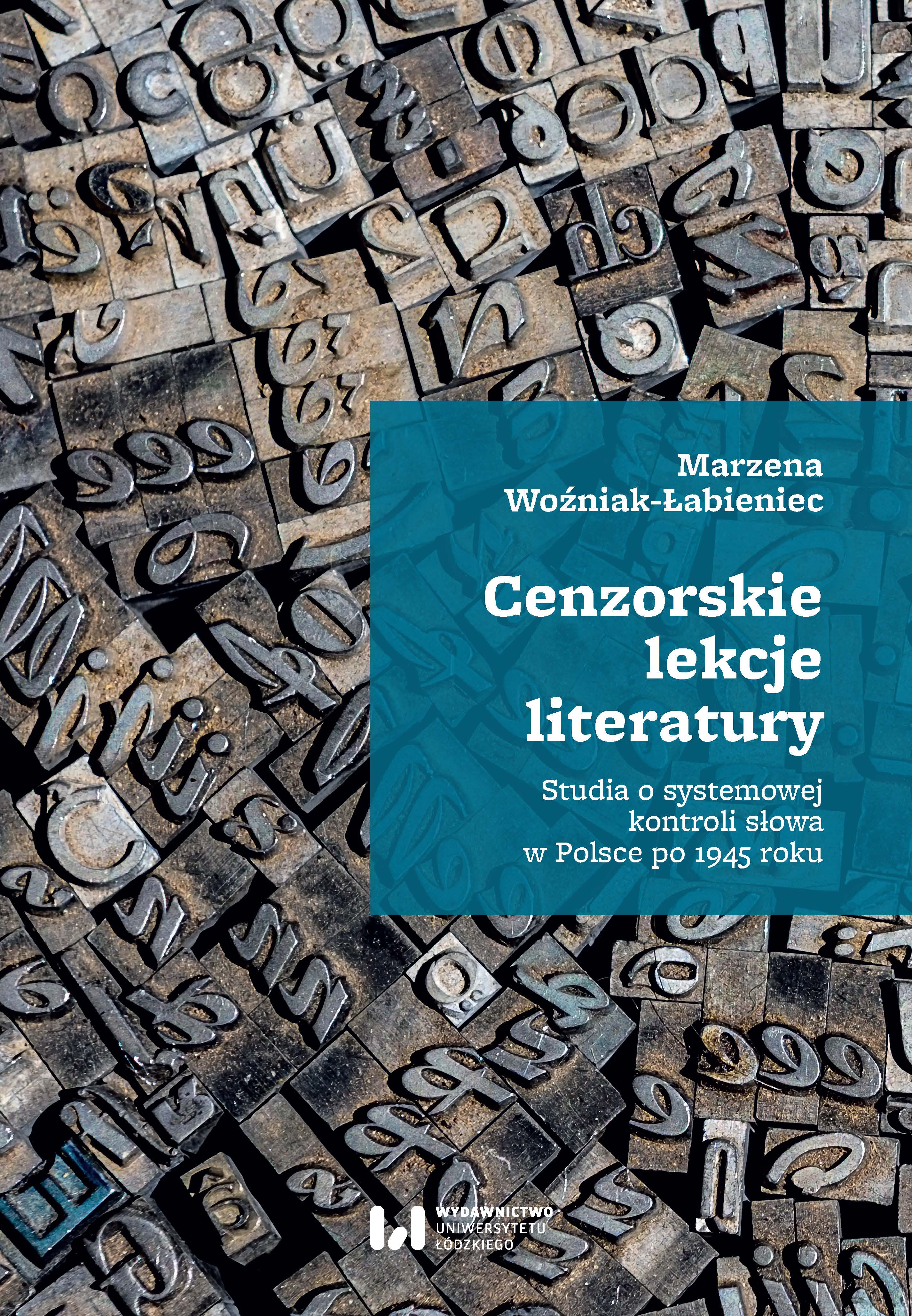Cenzorskie lekcje literatury. Studia o systemowej kontroli słowa w Polsce po 1945 roku
Censorship’s literature lessons. Studies into the systemic control of language in Poland from 1945
Author(s): Marzena Woźniak-Łabieniec
Subject(s): Language and Literature Studies, Studies of Literature
Published by: Wydawnictwo Uniwersytetu Łódzkiego
Keywords: censorship in Polish People's Republic; „Nowiny Literackie”; Teodor Parnicki; Jarosław Marek Rymkiewicz; Marek Nowakowski; Tadeusz Różewicz; Czesław Miłosz
Summary/Abstract: The studies which form the body of this collection have been developed over nearly a decade. Their goal: to discuss how censorship operated in the Polish People’s Republic, a system that utilised the state-controlled party-dependent Chief Control Bureau for Press, Publications and Performances (Główny Urząd Kontroli Prasy, Publikacji i Widowisk – GUKPPiW) to monitor and influence writers and the shape of their works. Most of the studies have applied the method of archival research reviewing documents left by the Control Bureau now held by the Archive of Modern Records (Archiwum Akt Nowych) in Warsaw and by select State Archives, and confronting them with published texts. In the first part, which is an introduction into censorship mechanisms, I have discussed how the Control Bureau subliminally shaped the image of the reality, consolidating the new order (protecting the image of the governing party) without anyone noticing, and how it covered its traces even during the thaw period. The second part consists of an extensive study devoted to the Nowiny Literackie journal edited by Iwaszkiewicz. The weekly’s two years of existence offer an excellent record of how the functioning of literature changed within the period of 1947–1948. It clearly shows how politics (or history) unfolding before one’s eyes gradually yet emphatically increased its influence on the literary journal. The final chapter of the second part discusses the post-WWII relations between friends from the Skamander literary group Jarosław Iwaszkiewicz and Mieczysław Grydzewski, the latter being the editor of the London-based Wiadomości. The third part, the longest one, contains five studies of how five individual writers were censored, indicating the different extents of the censorship efforts and the reasons for specific interventions. In the case of Tadeusz Różewicz, I have traced the censorship reception and the public reception of his initial poetic collection Opadły liście z drzew. I applied a similar structure to the second chapter in this part, this time devoted to the novel Trampolina by Marek Nowakowski. In both cases I have focussed on a single original volume and reconstruct the story of its publication and reception. The third chapter is devised somewhat differently: we discuss censor reviews of subsequent collections of Teodor Parnicki’s prose in the context of his émigré biography, which was inconvenient for the governing party. The fourth chapter offers a chronological study of the interventions into the works by Jarosław Marek Rymkiewicz, from minor “corrections” to the classicism programme due to his inspiration with Miłosz to more major ones, resulting from his particular use of the Romantic paradigm. The final chapter in this part is devoted to Czesław Miłosz. This time the focus is placed on the subsequent issues of the Tygodnik Powszechny, from its 1980 September issue, prior the Nobel Prize an-nouncement, to the July issue the following year, which contains the last ripples made by Miłosz’ visit in Poland. My selection of the studies was a result of, on the one hand, the fragmenta-tion of the GUKPPiW archives and, on the other, my intention to present interest-ing and sometimes surprising mechanisms of how censorship in Poland worked, mechanisms which become evident only when examined from up close.
Series: Uniwersytet Łódzki
- E-ISBN-13: 978-83-8220-801-6
- Print-ISBN-13: 978-83-8220-800-9
- Page Count: 296
- Publication Year: 2022
- Language: Polish
- eBook-PDF
- Table of Content

